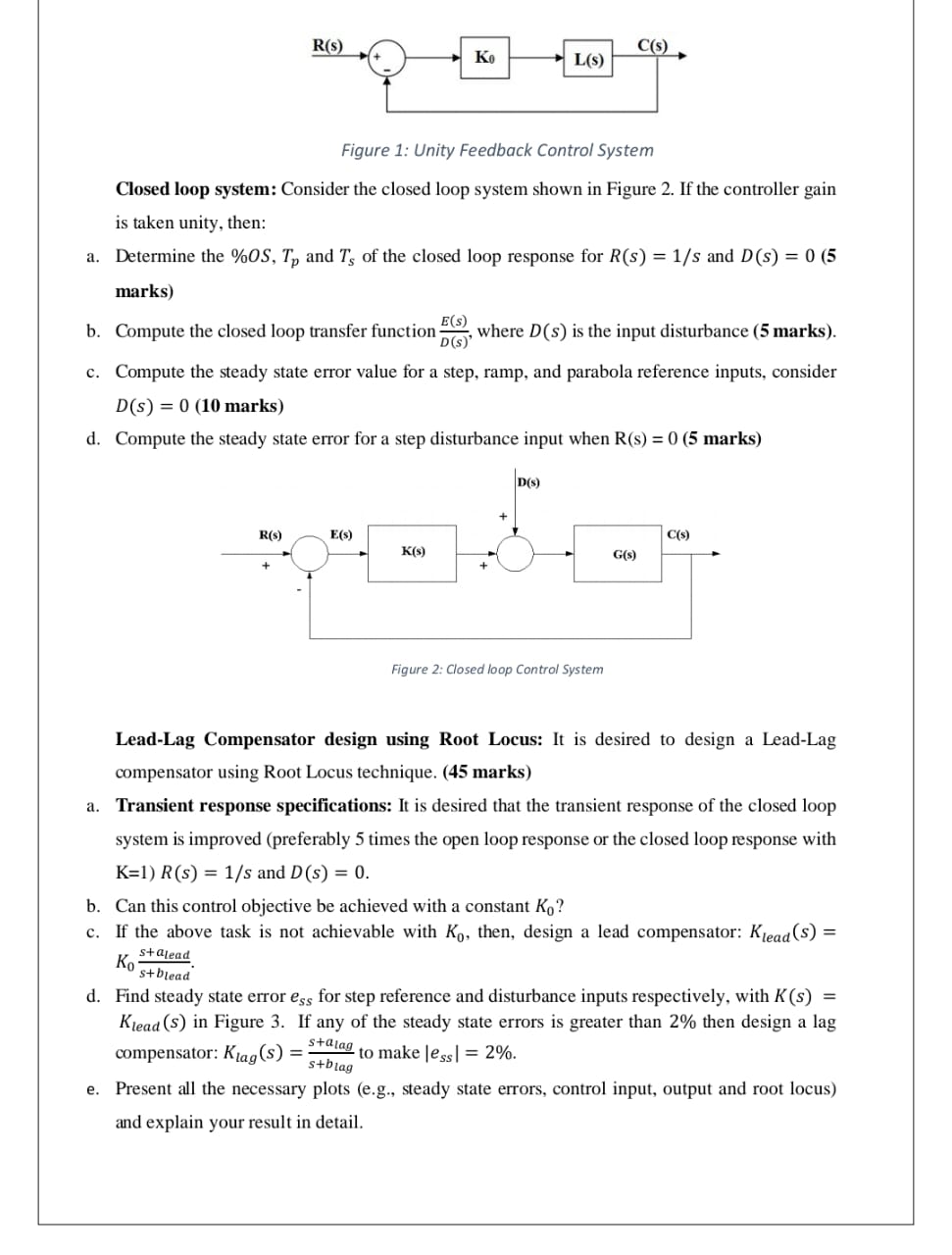Instructions:
* Submit a report containing a detailed description of all the tasks.
* Provide MATLA(B)/(S)IMULINK files used to simulate the tasks.
* Provide the MATLAB plots wherever necessary. All the figures should be
properly labelled, and units of physical quantities should be mentioned correctly.
Problem Statement: You are tasked to analyze and design a feedback control system for a
physical system of your choice. Preferably, the system should be a second-order system, but
you are allowed to explore systems beyond this as long as it aligns with the course topics. The
main objective is to apply the control system analysis and design techniques learned throughout
the semester.
Part 1: System Modeling and Open Loop Analysis
Choose a physical system (e.g., mechanical, electrical, electromechanical) and derive its
transfer function G(s) using mathematical modeling based on physical laws. Clearly define
system’s inputs and outputs.
System analysis: Considering your chosen open loop system ????????(ss):
a. Determine poles and zeros of the open loop transfer function. By looking at the poles and zeros,
what can you say about stability of the system? (5 marks)
Now Consider the system connected in a unity feedback configuration as shown in Figure 2:
b. Plot the root locus for L(s) by hand and by using MATLAB. Clearly label the key points (e.g.,
asymptotes, breakaway points, and intersections with imaginary axis). (10 marks)
c. Find range of K for stability. Also mention value of ????????0 where system becomes marginally
stable. Verify your results using MATLAB resultsFigure 1: Unity Feedback Control System
Closed loop system: Consider the closed loop system shown in Figure 2. If the controller gain
is taken unity, then:
a. Determine the %OS,T_(p) and T_(s) of the closed loop response for R(s)=(1)/(s) and
marks(E(s))/(D(s)), where D(s)5 marksD(s)=0 (10 marks)
d. Compute the steady state error for a step disturbance input when R(s)=05 marksK=1 and D(s)=0.
b. Can this control objective be achieved with a constant K_(0) ?
c. If the above task is not achievable with K_(0), then, design a lead compensator: K_(lead )(s)=
K_(0)(s+a_(lead ))/(s+b_(lead )).
d. Find steady state error e_(ss) for step reference and disturbance inputs respectively, with K(s)=
K_(lead )(s) in Figure 3. If any of the steady state errors is greater than 2% then design a lag
compensator: K_(lag )(s)=(s+a_(lag ))/(s+b_(lag )) to make |e_(ss)|=2%.
e. Present all the necessary plots (e.g., steady state errors, control input, output and root locus)
and explain your result in detail. solve it according to spring mass system second order system w
